10 Mysterious Ancient Stones In North America That Could Re-Write History
Ellen Lloyd - AncientPages.com - A number of mysterious ancient stones and rocks with odd carvings have been discovered in North America. Could some of these stones and rocks prove the existence of a lost advanced civilization?
What is the true story behind the enigmatic stones’ past? Several of the stones and rocks are covered with puzzling, sometimes even bizarre images and symbols. Are these depictions ancient messages deliberately created for future generations or something else we have not been able to comprehend?
In this top list we examine some of the most intriguing ancient stones ever discovered in North America.
1. New England’s Mystery Stone
The "Mystery Stone" is on display at the Museum of New Hampshire History in Concord, N.H., June 28, 2006. The stone is believed to have been discovered in 1872 by workers digging for a fence post near Lake Winnipesaukee, but no one knows for sure who made it, why, how, or when it was made. (AP Photo/Jim Cole)
In 1872 a couple of construction workers dug up a suspicious lump of clay near the shore of Lake Winnipesauke and discovered an artifact that today is known as “New England’s Mystery Stone”, sometimes also called Lake Winnipesaukee mystery stone.
It has been impossible to verify the age of the stone and determine how it was carved. To make it even more interesting, the unknown creator decided to add a number of inscriptions and strange symbols, which are still open for interpretation. Read more
2. Does The Mysterious Judaculla Rock Contain A Secret Coded Message To Mankind?
Judaculla rock
This rock covered with undecipherable symbols is one of the greatest archaeological mysteries of North America.
Neither scholars nor older residents have been able to decipher it. Neither do they know its true origin nor purpose.
Is it a prehistoric code or some kind of secret message for future generations of humanity?
Judaculla Rock is one of the largest in the Southeast, and the largest petroglyph in North Carolina, located in the Caney Fork Creek valley in Jackson County, outside of Cullowhee.
The details of the petroglyph’s formation are unknown to scientists. Judaculla Rock is not an ordinary stone because it has something else: scribbling, markings, dribbling and spidery lines. And these mysterious symbols can be more than 10,000 years old. Read more
3. Bourne Stone In Massachusetts – Evidence Of Atlantic Contact, Norse Runes Or Native American Petroglyphs?
Bourne Stone in Massachusetts
The Bourne Stone in Massachusetts is an archaeological mystery. The stone is a 300-pound chunk of granite, upon which two lines of carvings were made. The meaning of the carvings has been greatly debated.
According to the Archaeological Institute of America the Bourne Stone probably started as a doorstep of a Native American meetinghouse around 1680, then passed through several owners, landing at the Aptucxet Trading Post in Bourne about 1930.
Barry Fell, a professor of invertebrate zoology at the Harvard Museum of Comparative Zoology who is also well known for his controversial work in New World epigraphy has suggested that various inscriptions in the Americas are best explained by extensive pre-Columbian contact with Old World civilizations. In Fell’s opinion, the carvings on the Bourne Stone are in an Iberian script and language. Fell suggests that Carthaginian-type people writing with the Ibero-Punic script may have reached the New England coast as early as 475 BCE.
Some other scientists have suggested the markings are Norse runes, while yet another theory is that the carvings are similar to Native American petroglyphs.
The carvings on the Bourne Stone in Massachusetts have never been deciphered.
4. Grave Creek Stone Of Moundsville, West Virginia
Grave Creek Stone Of Moundsville, West Virginia
The Grave Creek Stone was discovered in 1838 during the excavation of the Grave Creek Mound, in Moundsville, West Virginia, on the Ohio River. It was unearthed together with several human skeletons and a considerable amount of jewelry and other artifacts.
The current whereabouts of the stone are unknown. In 1868 it was in the collection of E.H. Davis, of Squier and Davis fame, before most of Davis's collection was sold to the Blackmore Museum, now part of the British Museum.
Whether the small sandstone disk inscribed on one side with some twenty-five characters is genuine or not remains unknown. There is only one photograph of the stone that can be found in a book from 1752.
Anthropologist David Oestreicher suggested that the inscription had been forged by James W. Clemens, a local physician who had made the inscription based on unknown letters on Spanish coins and monuments from an 18th-century book.
Henry Rowe Schoolcraft, a renowned geologist who visited the site in 1843 suggested the inscription contains four characters corresponding to the Ancient Greek, four Etruscan, five Runic, six ancient Gallic, seven old Erse, ten Phoenician, fourteen old British, sixteen Celtiberic, with some resemblance to the Hebrew. Schoolcraft was inclined to regard the whole inscription as Celtiberic.
If the Grave Creek Stone is genuine, it could provide evidence of a primitive alphabet.
5. The Runestones Of Oklahoma
Heavener Runestone
There are several runestones in Oklahoma and the oldest of them is the ‘Heavener Runestone’. The word “rune” comes from Old Norse and means “Secret knowledge and wisdom”. The true age and origin of the runes are still shrouded in mystery. Symbols resembling runes appear as cave markings as early as the late Bronze Age. It was not until about 200 AD when the runemal (i.e. the art of runic interpretation) was wide-spread in Northern Europe that the runic alphabet emerged.
Most of the characters on the ‘Heavener Runestone’ belong to the Elder Futhark, the oldest form of the runic alphabets. It was a writing system used by Germanic tribes for the northwestern and Migration period dialects. The Heavener Runestone does however not appear to have been made by the Vikings.
Henrik Williams, a professor of Scandinavian languages at Uppsala University, Sweden studied the stone in detail and concluded that although this is probably one of the most impressive runic memorials, monuments, in the entire world, this is not a Viking runestone. The stone, uncharacteristically large for a runestone, has eight runes carved into it. The letters when translated into English read GNOMEDAL or GNLOMEDAL, which have been interpreted to mean Gnome Valley, G. Nomedal, or the phrase Williams prefers, Little Valley.
Williams said the runes date to those used in the earliest of four runic systems known as the Elder Futhark. The system was used from roughly 100 to 700 A.D., predating the first Vikings by at least 50 years.
Shawnee Runestone - Image credit: Heironymous Rowe
The Poteau Stone discovered by schoolboys in 1967 near Poteau in Le Flore County does also contain letters from the Elder Futhark and Younger Futhark alphabet but is not considered to have been created by the Vikings.
Shawnee and Pawnee Stones were discovered in 1969 in Shawnee, Oklahoma, one mile from the North Canadian River. Both these runestones are considered to be the product modern period.
The inscription reads either mldok or midok in standard Elder Futhark lettering.
6. Kensington Runestone Remains A Mysterious And Controversial Artifact
Kensington Runestone
The Kensington Runestone has been the subject of discussion and controversy since its discovery in 1898 by a Swedish farmer, named Olof Ohman, while clearing land for his farm near Kensington, Minnesota. For years the stone has been considered a controversial runestone and it led researchers from around the world an exhaustive quest to explain how a runic artifact, dated 1362, could show up in North America.
Several scholars have claimed the stone is a hoax and there were also many scientists who insisted the runestone it genuine. The inscription on the stone describes the arrival of Norwegian Vikings in America in 1362.
Olof Ohman has long been accused of deliberately carving the stone so he could later pretend to find it. Ohman admitted knowing runes and had been seen carving runes on sticks during his early years in Minnesota, but he also said he did not carve the Kensington runestone.
The family of Olof Ohman endured scorn, ridicule, and lies. The stone itself was “borrowed” by an unscrupulous researcher and never returned.
Today, the National Museum of Natural History continues to receive public inquiries about the Stone and the Smithsonian's current position. The Department of Anthropology answers these inquiries with a statement written in unambiguous terms saying that scholarly opinion has judged the Kensington Stone to be a nineteenth-century creation.
According to Scott Wolter a geologist and researcher of the Kensington Runestone there are hidden secrets carved in this stone. In 2000 Wolter performed one of the very few geological studies on the stone. He says the breakdown of minerals in the inscription shows the carving is at least 200 years old, older than Olof Ohman. Those findings support the first geological study in 1910 that also found the stone to be genuine. Wolter was the first to discover dots inside four R shaped runes on the stone. He said they are intentional and they mean something. "We found the dotted R's. It's an extremely rare rune that only appeared during medieval times. This absolutely fingerprints it to the 14th century. This is linguistic proof. This is medieval, period," Wolter said.
The Kensington Stone has been an intriguing and successful mystery. More than one hundred years after its finding, the inscription is still the subject of debate.
7. Los Lunas Decalogue Stone In New Mexico
Los Lunas Decalogue Stone
The Los Lunas Decalogue Stone is a large boulder on the side of Hidden Mountain, near Los Lunas, New Mexico, about 35 miles (56 km) south of Albuquerque, that bears a very regular inscription carved into a flat panel. Also known as the Los Lunas Mystery Stone or Commandment Rock, the stone has a carved abridged version of the Decalogue or Ten Commandments. The stone weighs over 80 tons, which is the reason why it has been ever been moved to a museum or laboratory for study and safekeeping.
The stone is controversial because some claim the inscription is Pre-Columbian, and therefore proof of early Semitic contact with the Americas. Professor Frank Hibben (1910-2002), an archaeologist from the University of New Mexico was convinced the inscription is ancient and thus authentic. Some archaeologists have said the stone is a fake.
8. Dighton Rock – Centuries-Old-Mystery Still Unsolved
The first photograph of Dighton Rock, by Capt. Seth Eastman (1853)
Dighton Rock was the subject of intense debate, curiosity, and wonder for centuries.
It’s a rock with a mysterious past we are unable to decipher. Its cuneiform-style inscriptions have long intrigued and puzzled observers and researchers.
A 40-ton boulder has the form of a slanted, six-sided block, approximately 5 feet (1.5 m) high, 9.5 feet (2.9 m) wide, and 11 feet (3.4 m) long.
It was found partially submerged on the Taunton River at Berkley, Massachusetts (formerly part of the town of Dighton).
Covered with petroglyphs, carved designs of ancient and uncertain origin, the rock is now installed in a memorial building nearby in the town of Berkley.
Over the last three centuries, people were making a series of accusations about the origins of the rock. More than 20 theories have been proposed about its origins Ezra Stiles (1727 -1795), an American academic, theologian and author, was convinced the rock was carved by ancient Phoenicians.
Some speculated that the Vikings or Native Americans did it; others credited early Portuguese explorers with the Dighton Rock inscription. Read more
9. Incredible Roseau Stone Reveals 200,000-Year-Old Writing
Roseau famous stone, found in America, once decrypted. As it turned out, even before the Sumerians Russian words were written in the same way as now. In the tape-rim stone hidden words, and above shows the face of the ancient goddess of Yara: a pair of dark eyes, beads and canine, sticking out of the closed mouth. From above it is clear that the stone is oval, very reminiscent of a lion's face from the front, which is most characteristic of the zoomorphic face Yar. On the circumference is an intricate decorative pattern — a belt. His signs are clearly visible, but the style of writing very similar ligature — writing style, which is usually written in section titles (chapters) manuscripts.
The incredible Roseau Stone discovered in Minnesota, the US could easily re-write our history.
The stone does not only reveal that several ancient civilizations from across the sea visited North America in prehistoric times, but also that our ancestors were familiar with writing 200,000 years ago!
The story of this incredible stone is shrouded in mystery. Putting together the pieces is almost like solving a detective story. The small stone, not more than perhaps two inches was discovered in 1927 in Roseau, Minnesota by Mr. Jake Nelson. While digging in his garden, he accidentally came across several stone hammers, arrowheads, ceramic shards, animal bones, and this precious stone. One of the reasons he was able to uncover so many artifacts was because his home was on the site of an ancient Indian settlement.
The stone was given to John Jager, a famous American anthropologist, and expert on ancient texts. Jager was a remarkable scientist. He was a genius interested in world-wide anthropology and epigraphy. He was also one of the first pioneers to put forth the idea of cultural diffusion and global travel, to North America, by the ancient mariners.
When Jager compared the engravings on the Roseau stone with other ancient inscription samples collected from around the world, he made a stunning discovery.
“This inscription was made by ancient Greek and Egyptian civilizations. There are even Sumerian signs. Sumer is considered to be the first civilization on Earth and it is older than the Cathay Hüyük (Katal-huyuk) in Anatolia (Turkey),” he wrote in his diary. Read more
10. Controversial Davenport And Pontotoc Stele Reveal Ancient Egyptians And Black Africans Visited North America
Davenport Stele
Is it possible to find evidence ancient Egyptians and Africans visited America in the past? Can the controversial Davenport and Pontotoc stele shed light on the mystery?
The Davenport Stele was unearthed in a burial mound in 1877 in Iowa. This curios artifact is called “The Davenport Calendar stele” or the “Djed Festival tablet”
It contains a carving of “Opening of the Mouth Ceremony” which is of Nubian/Egyptian origin. Dr. Barry Fell (1917-1994), a Harvard scholar with an avocation for ancient writings. Egyptian and Libyan explorers had sailed up the Mississippi River and left the written stone tablet, the Davenport Stele.
However, the University of Iowa archaeologist Marshall McKusick disagreed, and said the tablet was a hoax.
According to McKusick the Davenport Stele hoaxers had been members of the Davenport Academy of Science who had buried fake stone tablets “on the old Cook farm.”
They wanted to trick one of their members and then ridicule him. Dr. Barry Fell allowed that two of the three stone tablets had indeed been probable fakes.
“But the third, which he refers to as the Davenport Calendar Stele, definitely is not, he says.” Read more
Written by Ellen Lloyd – AncientPages.com
Copyright © AncientPages.com & Ellen Lloyd All rights reserved. This material may not be published, broadcast, rewritten or redistributed in whole or part without the express written permission of AncientPages.com and Ellen Lloyd
More From Ancient Pages
-
 Alexander The Great And The Prophecy Of The Tree Of The Sun And Moon
Featured Stories | Jun 10, 2019
Alexander The Great And The Prophecy Of The Tree Of The Sun And Moon
Featured Stories | Jun 10, 2019 -
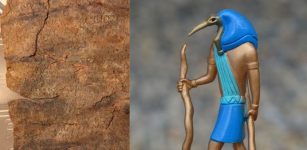 Curse Of The Dancer – Mysterious 1,500-Year-Old Tablet Finally Deciphered
Archaeology | Oct 14, 2019
Curse Of The Dancer – Mysterious 1,500-Year-Old Tablet Finally Deciphered
Archaeology | Oct 14, 2019 -
 Surprising Evidence Of 12,000-Year-Old Unknown Advanced Secret Knowledge Held By Elite Individuals – The Connection – Part 2
Ancient Mysteries | Feb 7, 2021
Surprising Evidence Of 12,000-Year-Old Unknown Advanced Secret Knowledge Held By Elite Individuals – The Connection – Part 2
Ancient Mysteries | Feb 7, 2021 -
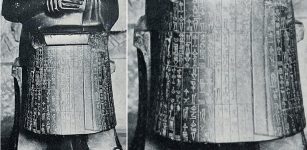 Statue Of Gudea: The King-Priest Of Sumerian City Of Lagash In Southeast Mesopotamia
Featured Stories | Aug 14, 2016
Statue Of Gudea: The King-Priest Of Sumerian City Of Lagash In Southeast Mesopotamia
Featured Stories | Aug 14, 2016 -
 Achilles – Son Of King Peleus And Leader Of The Nereids
Featured Stories | Sep 3, 2015
Achilles – Son Of King Peleus And Leader Of The Nereids
Featured Stories | Sep 3, 2015 -
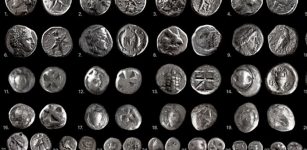 Incredible Treasure Of Extremely Rare Greek Coins And Aqueduct Found In Ancient Tenea, Greece
Archaeology | Jan 10, 2024
Incredible Treasure Of Extremely Rare Greek Coins And Aqueduct Found In Ancient Tenea, Greece
Archaeology | Jan 10, 2024 -
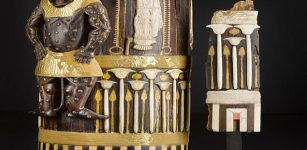 Ancient Egyptian Wooden Box Inscribed For Pharaoh Amenhotep II Is Now Restored
Archaeology | Mar 10, 2017
Ancient Egyptian Wooden Box Inscribed For Pharaoh Amenhotep II Is Now Restored
Archaeology | Mar 10, 2017 -
 New Evidence Of Roman And Medieval Leicester
Archaeology | Dec 10, 2015
New Evidence Of Roman And Medieval Leicester
Archaeology | Dec 10, 2015 -
 Amazing Photos Of Ancient Ruins Hidden Under Thessaloniki Metro Revealed By Archaeologists
Archaeology | Jan 9, 2023
Amazing Photos Of Ancient Ruins Hidden Under Thessaloniki Metro Revealed By Archaeologists
Archaeology | Jan 9, 2023 -
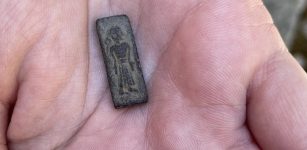 Rare And Tiny Ancient Stamps Found In Falster May Show The Way To An Unknown King’s Home
Archaeology | Jul 26, 2023
Rare And Tiny Ancient Stamps Found In Falster May Show The Way To An Unknown King’s Home
Archaeology | Jul 26, 2023 -
 Mystery Of The Strange Rock In New England That People Fear To Approach
Featured Stories | Apr 17, 2024
Mystery Of The Strange Rock In New England That People Fear To Approach
Featured Stories | Apr 17, 2024 -
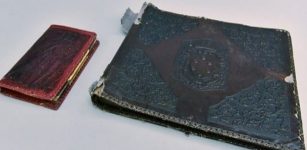 Nazi Photo Album Made Of Human Skin Found At Polish Antiques Market
History | Mar 18, 2020
Nazi Photo Album Made Of Human Skin Found At Polish Antiques Market
History | Mar 18, 2020 -
 New Project Aims To Solve Mysterious Millennia-Old Rock Carvings Of Argyll, Scotland
Archaeology | Mar 20, 2017
New Project Aims To Solve Mysterious Millennia-Old Rock Carvings Of Argyll, Scotland
Archaeology | Mar 20, 2017 -
 Scientists Search For North America’s ‘Atlantis’ – Submerged Landscapes In The Gulf Of Mexico Studied
Archaeology | Jul 2, 2024
Scientists Search For North America’s ‘Atlantis’ – Submerged Landscapes In The Gulf Of Mexico Studied
Archaeology | Jul 2, 2024 -
 Controversial Roman Emperor Heliogabalus Wanted To Be A Woman And Much More
Featured Stories | Jun 14, 2020
Controversial Roman Emperor Heliogabalus Wanted To Be A Woman And Much More
Featured Stories | Jun 14, 2020 -
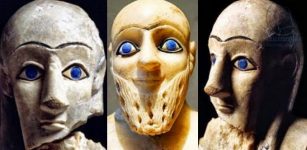 Mysterious Sumerian Statues With Big Blue Eyes – A Sign From The Gods
Civilizations | Feb 23, 2017
Mysterious Sumerian Statues With Big Blue Eyes – A Sign From The Gods
Civilizations | Feb 23, 2017 -
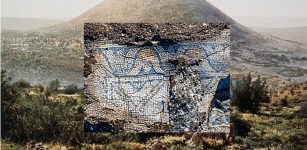 1,300-Year-Old Church Discovered Near Mt. Tabor In Lower Galilee, Israel
Archaeology | Jul 28, 2020
1,300-Year-Old Church Discovered Near Mt. Tabor In Lower Galilee, Israel
Archaeology | Jul 28, 2020 -
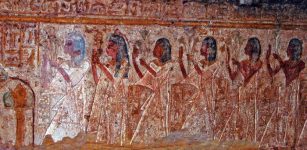 Rock-Cut Tomb Of Pennut, Viceroy Of Nubia Under Reign Of Ramses VI
Civilizations | Dec 7, 2018
Rock-Cut Tomb Of Pennut, Viceroy Of Nubia Under Reign Of Ramses VI
Civilizations | Dec 7, 2018 -
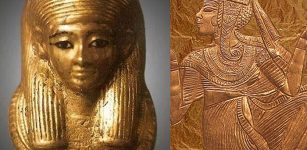 Mystery Of Dakhamunzu And The Zannanza Affair – Was Queen Ankhesenamun Hiding Her Identity?
Featured Stories | Feb 1, 2019
Mystery Of Dakhamunzu And The Zannanza Affair – Was Queen Ankhesenamun Hiding Her Identity?
Featured Stories | Feb 1, 2019 -
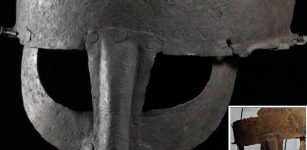 Why Is The Yarm Viking Helmet Special?
Archaeology | Aug 10, 2020
Why Is The Yarm Viking Helmet Special?
Archaeology | Aug 10, 2020












